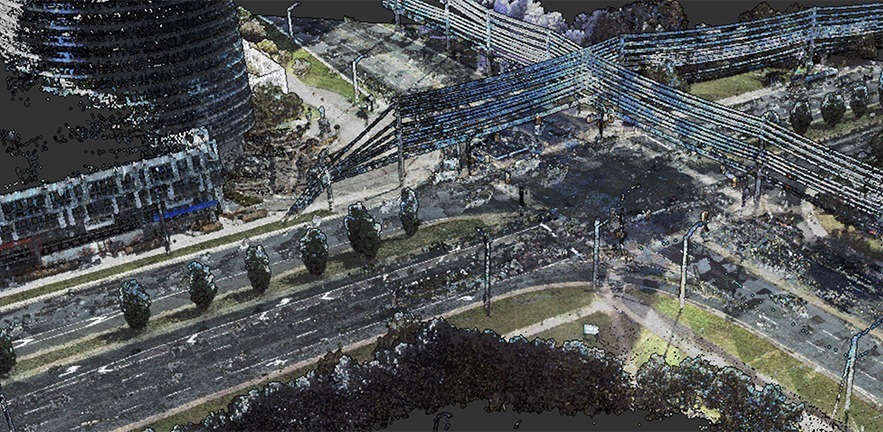‘Translating’ raw laser data into meaningful information.


Paul Chernik, who recently began on the Executive MBA programme at Cambridge Judge Business School, is a native of the Canadian west and has long worked in the oil and gas sector. He now seeks to transfer technology used in the energy sector to many other areas of the economy and broader society.
Paul is a co-founder and a director of the technology venture Solv3D, which works with “point clouds” – the data from 3D laser scans of the physical environment. Also called LiDAR data, it has long been used by companies to plan large-scale projects such as pipeline routes and road works, but Paul says point clouds have far greater potential – and that’s what Solv3D aims to tap.
“We are past data collection being the limiting factor. Now we have affordable technology like drones, car-based scanners and even underwater scanners that can collect vast amounts of unprocessed data relatively cheaply. But the question is how do I convert that raw data to useful data and then how to I apply the information to add value to my project?”
Lasers are not able to “recognise” simple things: like lampposts versus signposts, what’s a road and what’s a curb, or whether an object is permanent (like a building) or transient (like a dog). But once the data is processed and the surfaces identified, then a whole new way of working becomes possible.
Paul says the technology could be used, for example, in police investigations. Following serious accidents, police often close busy roads for lengthy periods in order to collect forensic evidence at the scene. A laser scan of the accident scene offers a way of collecting GPS-referenced data accurate to the centimetre and even millimetre. Benefits include re-opening the road sooner and providing very accurate digital records of the scene for future study.
Based in Paul’s hometown of Calgary, Canada, Solv3D now has eight employees and currently offers two products: a point cloud processing engine and a web-based platform. How is Solv3D different from other companies? “We believe we are creating a platform, rather than a specific solution, a space where all stakeholders can engage with the data anywhere with internet access,” says Paul.
Billy Wong, an engineer at Solv3D client Stantec, a design and engineering company based in Edmonton, Canada, said Solv3D’s technology “promotes an interdisciplinary work flow and allows team members from different design backgrounds to both extract ‘as-is’ information in a number of different ways and to display and visualise the proposed design in essentially a full 3D context. The interface is not only easy to learn but also fast to navigate given the amount of data that is being shown.”
Besides assisting Solv3D and studying for his Executive MBA, Paul is an Executive Director for ERCE, an oil and gas consultancy with offices in London and Singapore. Paul’s specialisation is reserves and resource assessment – the study of the quantity, value, risk and uncertainty of oil and gas and how that information is related to investors, the finance community and governments.
Paul says the biggest challenge for Solv3D now is finding the balance between continued product development and sales growth. So far, he says the company has some key first-mover clients in Canada and the US in the construction, transportation and survey spaces, and is looking to expand within these industries and others.
His advice for other startup businesses: the importance of tax regulations in starting a new business. “I think the most important lesson I’ve learned: when raising capital, it is necessary to understand the venture capital tax regime for investors where you are incorporated. These tax credits are of great help in attracting angels to invest in your idea and the restrictions on them can limit your initial investment pool.”

